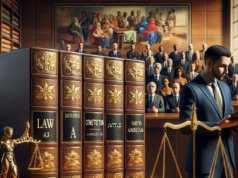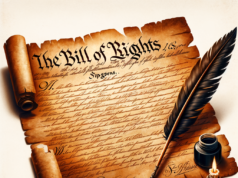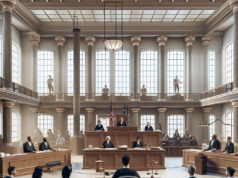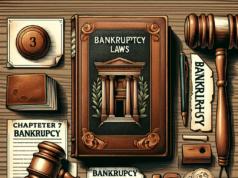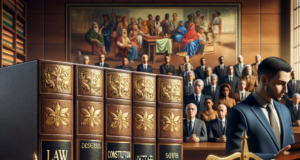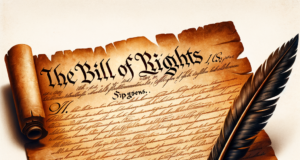Courtroom drama has long captivated the public’s imagination, often portrayed in films and television shows as a high-stakes battle between good and evil. However, the reality of legal proceedings is far more complex and nuanced. This article aims to unveil the truth behind courtroom drama, exploring the intricacies of legal representation, the dynamics of juries, the power of evidence, the influence of media, and the emotional toll on all participants involved in the judicial process.
Understanding Courtroom Drama: A Deep Dive into Legal Proceedings and Their Impact
Courtroom drama is not merely a theatrical spectacle; it is a critical component of the legal system that serves to uphold justice and maintain societal order. Legal proceedings are governed by a set of rules and protocols designed to ensure fairness and impartiality. The courtroom becomes a stage where various actors—judges, attorneys, witnesses, and jurors—play their roles in a structured environment. The impact of these proceedings extends beyond the immediate case at hand; they can influence public opinion, shape legal precedents, and even affect legislative changes. Understanding the intricacies of courtroom drama requires an appreciation of the legal framework and the societal implications of judicial outcomes.
The Role of Attorneys: Navigating the Complexities of Legal Representation
Attorneys are the architects of courtroom drama, tasked with navigating the complexities of legal representation. Their role extends beyond mere advocacy; they are responsible for crafting compelling narratives that resonate with judges and jurors alike. The effectiveness of an attorney often hinges on their ability to analyze vast amounts of information, identify relevant evidence, and present it in a manner that aligns with the legal standards of the case. Furthermore, attorneys must possess strong interpersonal skills to build rapport with clients, witnesses, and jurors, all while maintaining a strategic focus on the overarching goals of the trial. The attorney’s skill set is crucial in shaping the courtroom experience and ultimately influencing the outcome of the trial.
Jury Dynamics: The Influence of Jurors on Trial Outcomes and Public Perception
The jury serves as the cornerstone of the American legal system, embodying the principle of trial by peers. Jurors are tasked with the monumental responsibility of interpreting evidence and rendering verdicts that can alter lives. Their dynamics are influenced by a myriad of factors, including personal biases, groupthink, and the persuasive abilities of attorneys. Research has shown that jurors often bring their own experiences and beliefs into the deliberation room, which can significantly impact their interpretations of the evidence presented. Additionally, the public perception of trials can be swayed by the behavior and decisions of jurors, making their role in courtroom drama both pivotal and complex. Understanding these dynamics is essential for grasping how trials unfold and how justice is perceived in society.
The Power of Evidence: How Facts and Testimonies Shape Courtroom Narratives
Evidence is the lifeblood of courtroom drama, serving as the foundation upon which cases are built. The admissibility and presentation of evidence can make or break a case, as it is through facts and testimonies that the narrative of the trial is constructed. Attorneys must meticulously gather, analyze, and present evidence in a way that supports their client’s position while adhering to legal standards. The weight of evidence can vary significantly; eyewitness accounts, forensic data, and expert testimonies all play distinct roles in shaping the courtroom narrative. Moreover, the interpretation of evidence is often subject to debate, leading to differing conclusions that can influence jurors and public opinion alike. The power of evidence underscores the importance of thorough preparation and strategic presentation in the pursuit of justice.
Media Representation: The Impact of Television and Film on Public Understanding of Trials
The portrayal of courtroom drama in media—particularly in television and film—has a profound impact on public understanding of legal proceedings. While these representations can enhance interest in the legal system, they often oversimplify complex legal concepts and procedures, leading to misconceptions about the judicial process. Dramatic license frequently takes precedence over accuracy, resulting in narratives that prioritize entertainment over realism. This skewed representation can shape public perceptions of trials and influence expectations surrounding legal outcomes. As a result, it is crucial for audiences to approach media portrayals of courtroom drama with a critical eye, recognizing the distinction between fiction and the often more nuanced reality of legal proceedings.
The Emotional Toll: Exploring the Psychological Effects of Courtroom Battles on Participants
The courtroom is not only a battleground for legal arguments but also a site of profound emotional turmoil for all participants involved. Defendants, plaintiffs, witnesses, and jurors often experience a range of psychological effects, including stress, anxiety, and trauma. The stakes of a trial can be extraordinarily high, with outcomes affecting personal lives, reputations, and even freedom. For attorneys, the pressure to perform and secure favorable outcomes can lead to burnout and emotional exhaustion. Additionally, the adversarial nature of trials can exacerbate conflicts and create lasting emotional scars for those involved. Understanding the emotional toll of courtroom battles is essential for fostering a more compassionate legal environment and providing adequate support for those navigating the complexities of the judicial system.
In conclusion, courtroom drama is a multifaceted phenomenon that extends far beyond the confines of a legal battle. It encompasses the intricate interplay of legal representation, jury dynamics, the power of evidence, media influence, and the emotional experiences of all participants. By unveiling the truth behind courtroom drama, we gain a deeper understanding of its significance within the legal system and its broader implications for society. As we continue to engage with legal narratives, it is essential to approach them with an informed perspective, recognizing both the complexities of the judicial process and the human experiences that underpin it.





